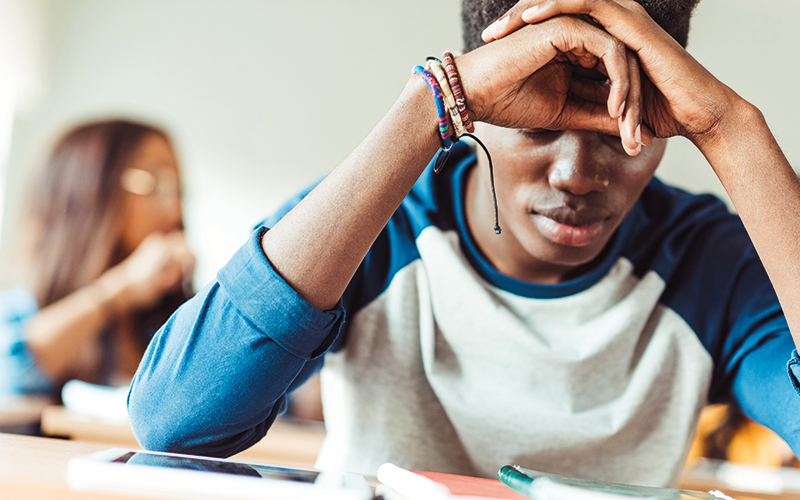Stress levels of university students have peaked during the COVID-19 pandemic. Whether these students return to campus or continue their studies remotely, that stress is unlikely to dissipate. In a recent survey, the U.S. Centers for Disease Control and Prevention reported that 62.9 per cent of individuals aged 18-24 disclosed increased feelings of anxiety or depression in June of 2020, compared to only 49.4 per cent in June of 2019. As the new school year begins, anxiety in students is likely to worsen, with the onset of a phenomenon colloquially referred to as the “back-to-school blues.”
Dr. Kristy Robinson, an assistant professor in the Department of Educational and Counselling Psychology at McGill, investigated the underlying emotional experiences that affect academic engagement and student motivation.
“I don’t doubt [back-to-school blues’] existence. It’s about mourning the loss of activities and fun that one gives up to pursue school,” Robinson said in an interview with The McGill Tribune. “Back to school anxiety is entirely natural for students of all ages and even affects professors.”
With the added pressure of focusing on schoolwork during the pandemic, students are likely to face unprecedented obstacles while trying to stay motivated throughout the semester. Demotivation, distracting home environments, and a lack of familiarity with online learning are all factors that can contribute to increased feelings of anxiety.
Motivation is multifaceted and results from the complex interplay between intrinsic and extrinsic influences. Intrinsic motivation comes from finding fulfillment in doing the activity itself, such as enjoying the process of learning. In contrast, extrinsic influences lie outside of the individual. The incentive of achieving good grades, for example, would be an instance of external motivation.
One study published in the journal Contemporary Educational Psychology, found that internal motivation declines rapidly as the semester progresses. This makes it crucial for students to acknowledge their external influences and establish mental and physical habits early in the semester to support their motivation and reduce anxiety. In situations where students have little control, regularly disconnecting from the source of stress for short periods of time is shown to be a useful coping mechanism.
Courses that are particularly difficult can create an unwelcoming and highly competitive environment with more sources of stress.
“Our studies have shown that students who aim to outperform others are more likely to feel stressed and become demotivated quickly,” Robinson said.
Ultimately, fear of the unknown is largely what drives the back-to-school blues. Uncertainties generate complex emotions of frustration and self-doubt, and can become overwhelming. According to self-determination theory, to become motivated, one must realize that determination relies on three basic needs: Competence, autonomy, and social connections.
For many students, online learning is already a challenging experience due to limited social interactions, fewer opportunities to study outside of their homes, and the expectation to quickly adapt to modified coursework while working equally as hard.
There are several ways students can approach this semester with more structure in order to manage their anxiety and motivation. To maintain focus while studying at home, students should prioritize building a routine and designating certain tasks to different spaces. Robinson advises to avoid using Netflix or eating at the same desk used to study.
While the aforementioned techniques build concentration, boosting motivation requires a different approach.
“Write down the reasons you want to do well at the beginning of the semester when you’re most motivated,” Robinson said. “Periodically checking in on those goals can uplift sinking motivation.”
This semester will require students to proactively develop a support system while respecting public health regulations.
“The best way to stay connected is by sharing our feelings,” Robinson said. “If you’re confused, say it, because it can help normalize the anxiety that many other students may also be experiencing.”








